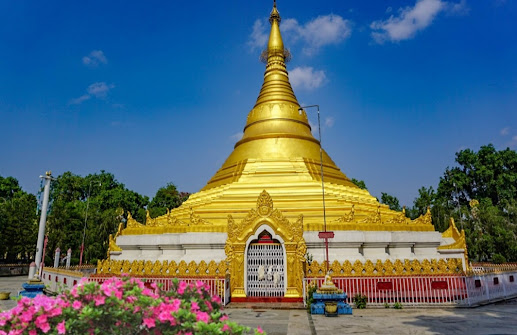Lord Buddha Birth Place in Lumbini Nepal
Nestled in the lush plains of southern Nepal lies Lumbini, a place of profound significance and spiritual resonance. Revered as the birthplace of Siddhartha Gautama, who later became the enlightened Buddha, Lumbini draws pilgrims, scholars, and curious travelers from all corners of the globe. Beyond its historical and religious importance, Lumbini offers a serene ambiance, where the whispers of enlightenment seem to linger in the air, inviting visitors to delve into introspection and inner peace.
Historical Significance:
Lumbini's history is steeped in legend and spirituality. According to tradition, Queen Maya Devi, the mother of Siddhartha Gautama, gave birth to him while grasping the branch of a sal tree in the gardens of Lumbini in 563 BCE. The newborn prince, destined for greatness, would go on to renounce his princely life and embark on a spiritual quest that culminated in his enlightenment under the Bodhi tree.
Over the centuries, Lumbini remained a place of pilgrimage for Buddhists, though its significance waned during periods of political turmoil. It wasn't until the late 19th century that Lumbini's importance was rediscovered by archaeologists, leading to extensive excavations and the identification of ancient ruins confirming its status as the Buddha's birthplace.
Attractions in Lumbini:
Today, Lumbini stands as a UNESCO World Heritage Site and a center for Buddhist pilgrimage and study. Visitors to this sacred site are greeted by a tranquil landscape adorned with monasteries, temples, gardens, and reflecting ponds. The Maya Devi Temple, built to commemorate the exact birthplace of Buddha, remains the focal point of reverence and reflection.
Exploring Lumbini offers a journey through time and spirituality. The Ashoka Pillar, erected by the Indian Emperor Ashoka in the 3rd century BCE, stands as a testament to the early recognition of Lumbini's significance. Nearby, the sacred Bodhi tree, a descendant of the original tree under which Buddha attained enlightenment, provides a serene spot for meditation and contemplation.
In addition to its religious landmarks, Lumbini boasts a vibrant international monastery zone, where Buddhist communities from around the world have constructed monasteries in their respective architectural styles. From the intricate pagodas of China to the minimalist designs of Japan, each monastery offers a unique glimpse into Buddhist culture and tradition.
Beyond the spiritual realm, Lumbini offers opportunities for cultural exchange and exploration. The Lumbini Museum provides insight into the region's history and archaeology, showcasing artifacts unearthed from the site. Visitors can also partake in traditional Nepali cuisine, shop for handicrafts, or simply wander through the peaceful gardens, soaking in the atmosphere of tranquility and contemplation.
Preserving Lumbini's Legacy:
As Lumbini continues to attract visitors from around the world, efforts are underway to preserve its cultural and environmental heritage. Conservation initiatives aim to protect the sacred site from encroaching development and maintain its pristine natural surroundings. Sustainable tourism practices are promoted to ensure that future generations can continue to experience the spiritual richness of Lumbini without compromising its integrity.
Way to Lumbini
Lumbini, located in Nepal, is renowned as the birthplace of Siddhartha Gautama, the founder of Buddhism and later known as Buddha. To reach Lumbini, one can fly into Gautam Buddha Airport in Bhairahawa, which is about 22 kilometers away. Alternatively, buses and taxis are available from major cities like Kathmandu and Pokhara, offering scenic journeys through Nepal's picturesque landscapes. Lumbini is accessible year-round, but the best time to visit is during the cooler months of October to December or February to April to avoid the monsoon rains. Once there, visitors can explore the sacred garden, monasteries, and the Mayadevi Temple.
Conclusion
Lumbini stands as a timeless testament to the life and teachings of the Buddha, offering pilgrims and travelers alike a sanctuary for introspection, reflection, and spiritual rejuvenation. Beyond its historical significance, Lumbini's serene ambiance and cultural diversity make it a destination worthy of exploration and reverence. Whether seeking enlightenment or simply seeking solace amidst natural beauty, Lumbini invites all who visit to embark on a journey of discovery and inner peace.
welcome to you in Lumbini Nepal
Dream Nepal












0 Comments